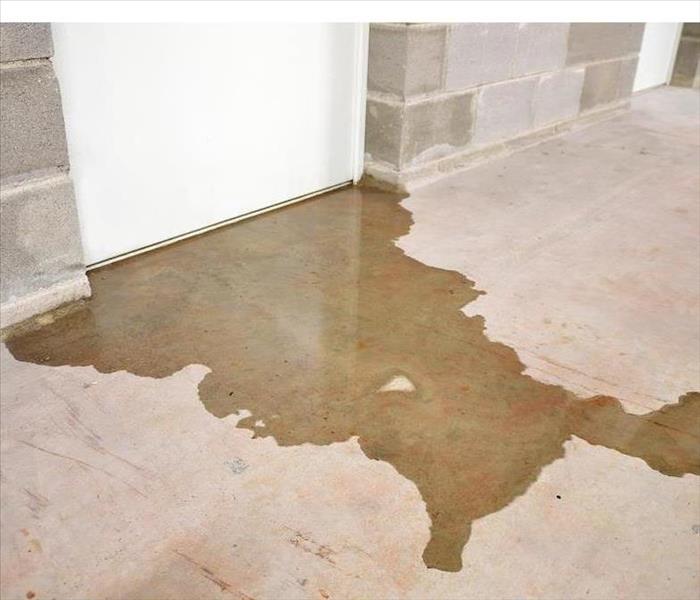How to Deal with a Sewage Overflow in Austin
12/3/2019 (Permalink)
 SERVPRO of East Central Austin Professionals are available 24 hours/7 days a week and will respond quickly to a restoration emergency.
SERVPRO of East Central Austin Professionals are available 24 hours/7 days a week and will respond quickly to a restoration emergency.
What to Do When You Have Sewage Problems
According to the Insurance Information Institute (III), the number of backed up sewers is increasing at an alarming rate of about 3 percent annually. Sewage contains harmful microorganisms such as bacteria, viruses and other harmful microbes. Direct contact with sewage or surfaces contaminated by sewage can result in illnesses such as gastroenteritis (stomach flu) and E. coli diarrhea.
Knowing what to do when you experience sewage overflow in your home is vital to protecting your health and the health of your family, as backed by the III.
There are several causes of sewer backups—here are some of the most common.
1. A clog in your home’s pipes
A sewer backup can be the result of a simple clog or backup within your home’s pipes.
Sewer clogs are easily preventable with maintenance and proper care. Take the following steps to prevent backups:
- Properly dispose of paper and disposable products. Paper towels, hygienic wipes and feminine products do not deteriorate quickly and can all create backups within your pipes if disposed of in the toilet. Make sure only human waste and toilet paper goes down.
- Properly dispose of grease. Cooking oil should be poured into a heat-resistant container and disposed of properly after it cools off, not in the drain. Grease will solidify in your pipes, creating blockages in your pipes.
2. Tree roots
Tree roots are a common cause of a clogged sewer line. As tree roots grow, they search for sources of water. If they latch onto a sewer pipe, they will grow into the pipe in order to reach the water inside.
Old homes are especially susceptible to damage caused by tree roots. Older sewer lines are typically constructed out of clay or other porous materials, which can become crushed by large, overgrown roots.
3. Damaged sewer pipes
When sewer pipes are broken or ruptured, the sewage won’t be able to properly drain through the system, resulting in frequent backups. There are several causes of damaged sewer pipes, including corrosion of an older pipe, leaking joints where the seals between sections of pipe have broken, and sewer pipe rupture due to shifting soil, settling, or use of heavy construction equipment above ground.
4. Blockage in a city sanitary main
Some sewer backups are caused by a city sanitary main blockage. If the blockage is not detected in time, sewage from the main can back up into homes and businesses through floor drains. These are usually detected and treated before they become an issue, but they have been known to occur.
5. Heavy rainfall or other weather-related events
Heavy rainfall, especially for a prolonged period of time, not only causes significant water damage in Austin and the need for water damage cleanup, but can also cause major problems for sewer lines. If the rainfall exceeds the capacity of the sewer line, the excess water coming into the line may find its way to your sewer line.
As a result, you can be left with inches, or even many feet, of waste-water in your basement due to the public drain system being overburdened.
What to do if you experience a sewer backup
While prompt cleanup of the damage and destruction to your home is essential, it’s important to take these steps first to ensure the health and safety of everyone in the household:
- Remove children, seniors, and pets from the affected area until it is restored to a safe condition.
- Contact the utility companies that service your area and have them shut off the electricity, gas, and water supply to your home. If there’s standing water due to the sewage backup, never enter the space while the power is on – this is dangerous. Electricity and water can kill.
- Open windows to ventilate the area. Don’t use your home’s AC as this will spread contaminated air throughout your home.
- Don’t use any water for bathing, drinking, washing hands, clothes or dishes.
- Add small amounts of chlorine bleach to standing water to help provide some disinfection.
Once you’ve performed these important first steps, proceed to:
- Notifying your insurance company that there has been a sewage spill in your home.
- Calling a professional water damage restoration company that specializes in sewage cleanup. Cleaning up sewer backup is a difficult, unpleasant, and risky task, that’s best left to professionals. Proper cleanup entails a step-by-step process that requires the skill of an experience team and the proper equipment to get the job done safely and correctly.
Keep in mind that you should only consider a DIY sewage backup cleanup in case of a minor spill – one that is confined to a small area of your home (bathroom, part of a kitchen, etc.) and has recently happened. Major spills require professional help and a team of trained water damage professionals to handle it correctly.
Who Should You Contact When You Have a Sewage Backup in Austin
In the event of a sewage backup in your Austin TX home or business, immediately contact SERVPRO of East Central Austin at (512) 420-9886 to arrange for the cleanup of your property. We’re available 24/7 to provide you with the most appropriate, safest, and cost-effective solution to the problem.
Included in our services is odor removal and content cleanup, so you’ll have all the aspects of the restoration process taken care of when using our professional sewage cleanup services.



 24/7 Emergency Service
24/7 Emergency Service